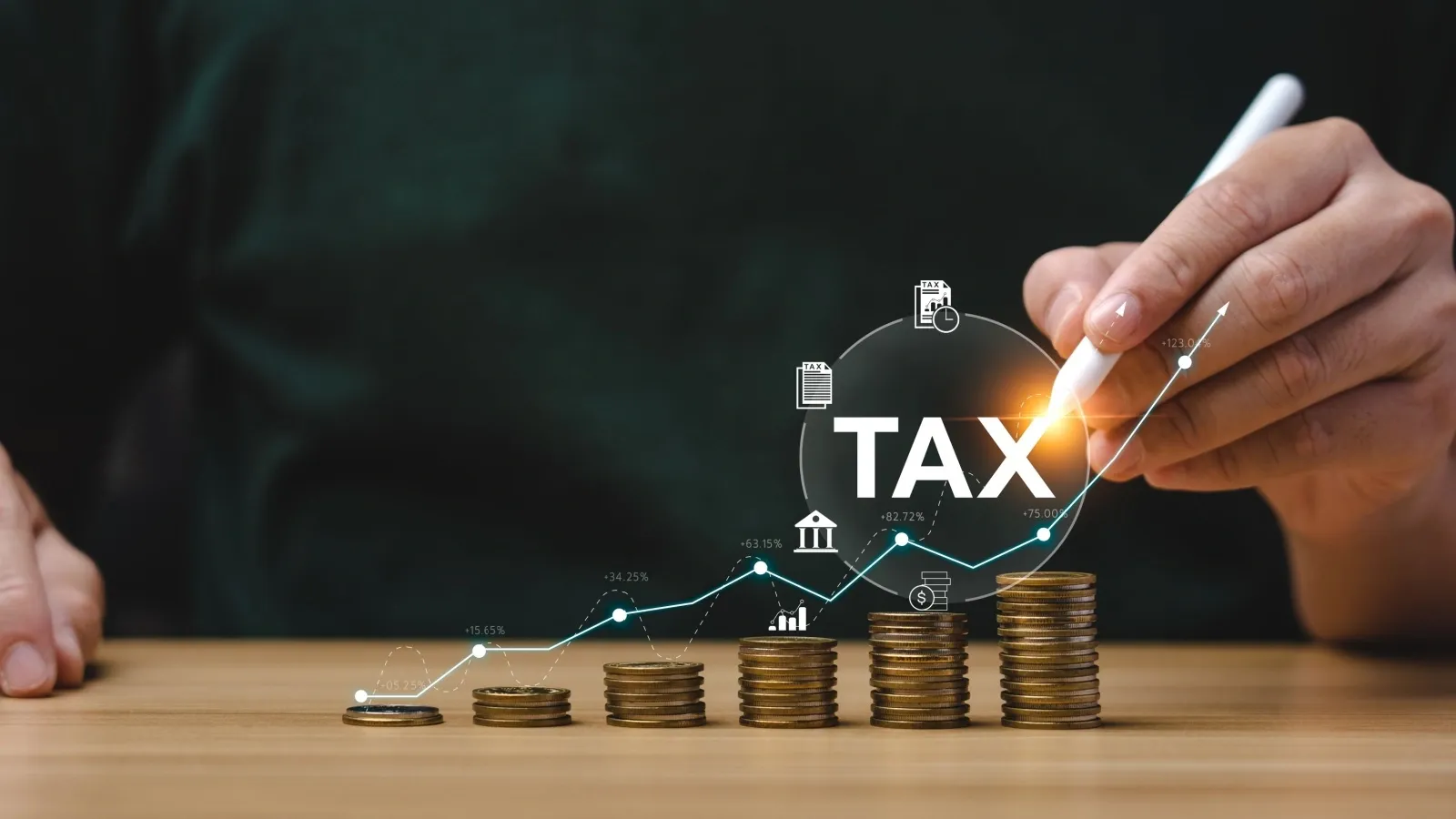Personal Finance News
Should you book ₹1.25 lakh Long Term Capital Gains (LTCG) every year?

7 min read | Updated on May 22, 2025, 08:41 IST
SUMMARY
Section 112A provides an annual exemption of ₹1.25 lakh on LTCG, and investors tend to book this every year and buy back the shares/mutual funds to stay invested and save taxes. However, very few know that if their salary income is, say, ₹11 lakh (after standard deduction) and capital gains are above ₹1 lakh, then they still might have to pay ₹50,000 (as per slabs for FY26 on ₹11 lakh) plus cess in taxes, even though capital gains are exempt.

The Finance Act, 2025 makes income up to ₹12 lakh effectively tax-free. However, this benefit does not apply to all types of income. | Image source: Shutterstock
Under the Income Tax Act, 1961 (IT Act), not all types of income are taxed as per the slab rates. While most income sources like salary, business income, and interest are taxed as per the slabs, certain categories of income are taxed at special rates, regardless of the total income. These include:
-
Long-Term Capital Gains (LTCG): Taxed at 12.5% under Section 112A on gains exceeding ₹1.25 lakh in a financial year (from listed equity shares, equity mutual funds, etc., held for more than a year).
-
Short-Term Capital Gains (STCG): Taxed at 20% under Section 111A on gains arising from the sale of listed equity shares, equity mutual funds, etc., held for less than one year.
-
Casual and lotteries Incomes: Winnings from lotteries, game shows, horse races, gambling, card games, etc., are taxed at a flat rate of 30% under Section 115BB, with no deductions against such income.
These incomes taxed at special rates are not considered eligible while calculating the rebate under Section 87A of the IT Act. Understanding these nuances is essential for effective tax planning. Let’s explore this with practical case studies.
Case 1:
Mr X is a salaried individual with a salary income of ₹11 lakh for FY 2025-26 and an LTCG of ₹1.5 lakhs during the same year:
| Particulars | Amt (₹) |
|---|---|
| Gross Salary Income | 11,00,000 |
| Less: Standard Deduction | 75,000 |
| Net Salary Income | 10,25,000 |
| LTCG u/s 112 A | 1,50,000 |
| Total Income | 11,75,000 |
| Particulars | Tax (₹) |
|---|---|
| Salary Income | 42,500 |
| LTCG u/s 112 A at 12.5% on (1,50,000 - 1,25,000) | 3,125 |
| Tax Before Rebate | 45,625 |
| Less: Rebate under section 87 A | 42,500 |
| Tax Before Cess | 3,125 |
| Add: Health and Education Cess (4%) | 125 |
| Total Tax Liability | 3,250 |
Notes:
a. Tax calculated as per slab rates.
b. No tax is levied under section 112 A on the first ₹1.25 lakh of LTCG each year.
c. Lower of tax on normal income as per slab rates or ₹60,000, where the total income is within ₹12 lakhs. Available against normal income, i.e., salary, in this case.
Case 2
Mr. Y is a salaried individual who has a salary income of ₹12,00,000 for the FY 2025-26. In addition, he has Long-Term Capital Gains (LTCG) of ₹1,25,000 during the same financial year.
| Particulars | Amt (₹) |
|---|---|
| Gross Salary Income | 12,00,000 |
| Less: Standard Deduction | 75,000 |
| Net Salary Income | 11,25,000 |
| LTCG u/s 112 A | 1,25,000 |
| Total Income | 12,50,000 |
| Income Type | Tax (₹) |
|---|---|
| Salary Income | 52,500 |
| LTCG u/s 112 A at 12.5% on gains above ₹1,25,000 | 0 |
| Total Tax Before Rebate | 52,500 |
| Less: Rebate under section 87 A | NA |
| Less: Marginal Relief | 2,500 |
| Total Tax Before Cess | 50,000 |
| Add: Health & Education Cess (4%) | 2,000 |
| Total Tax Liability | 52,000 |
Notes:
a. Tax calculated as per slab rates.
b. No tax is levied under section 112A on the first ₹1.25 lakh of LTCG each year.
c. Lower of tax on normal income as per slab rates or ₹60,000, where the total income is within ₹12 lakhs. Since in this case the total income exceeds ₹12 lakhs, no rebate should be available in this case.
d. Total tax to be restricted to income above ₹12 lakh where the tax exceeds income above ₹12 lakh. Reference is drawn to clause (b) of the first proviso to Section 87A.
It is critical to note that Section 87A of the IT Act states that an assessee is eligible for a rebate only where the total income is below ₹12 lakhs. While calculating a taxpayer’s total income, the standard deduction is reduced as per the provisions of Section 16. This section is a part of Chapter IV of the IT Act, which lays down the method of computation of income.
The ₹1.25 lakh exemption of LTCG u/s 112A does not lay down how incomes are computed but only provides tax rates for specified incomes.
When should you be careful about booking LTCG under Section 112 A?
Let’s assume that your salary increases over the four years as follows:
- Year 1: ₹10 lakh
- Year 2: ₹11 lakh
- Year 3: ₹12.5 lakh
- Year 4: ₹13 lakh
Option A refers to the cases where you book your capital gains of up to ₹1.25 lakhs each year. Option B refers to the cases where you don’t.
| Particulars | Year 1 | Year 2 | Year 3 | Year 4 | ||||
|---|---|---|---|---|---|---|---|---|
| Cases | A | B | A | B | A | B | A | B |
| Salary* | 10 | 10 | 11 | 11 | 12.5 | 12.5 | 13 | 13 |
| Capital Gains^ | 1.25 | - | 1.25 | - | 1.25 | - | 1.25 | - |
| Total Income | 11.25 | 10 | 12.25 | 11 | 13.75 | 12.5 | 14.25 | 13 |
| Tax on salary | - | - | 0.5 | - | 0.68 | 0.68 | 0.75 | 0.75 |
| Tax on capital gains | - | - | - | - | - | - | - | - |
| Less: Marginal relief | - | - | 0.25 | - | - | 0.18 | - | - |
| Tax payable before cess | - | - | 0.25 | - | 0.68 | 0.500 | 0.75 | 0.75 |
| Add: Cess @ 4% | - | - | 0.01 | - | 0.03 | 0.02 | 0.03 | 0.03 |
| Total tax payable | - | - | 0.26 | - | 0.71 | 0.52 | 0.78 | 0.78 |
Figures in ₹ lakhs. Rounded off to nearest two decimals. *Net of standard deduction of ₹75,000 ^Capital gains u/s 112A of ₹1.25 lakhs
While it may appear tax-efficient to book tax-free gains of ₹1.25 lakhs annually, doing it without considering your overall income can trigger marginal relief complications.
As your income crosses the threshold (like ₹12 lakh), the ₹1.25 lakh exemption under Section 112A can lead to unintended tax liability, especially at normal income levels of ₹11 lakh to ₹12.5 lakh. Hence, strategic timing of capital gains realisation is crucial, especially in years when your salary hovers near relief thresholds.
Should we even claim marginal relief?
“It is provided that where resident individuals opt for the new tax regime of Section 115BAC, the incomes chargeable to tax at special rates (for example, capital gains taxable under Section 111A, Section 112, etc.) shall be excluded from calculating the Section 87A rebate.”
Hence, more FAQs may be required from the income tax department's end to clear the confusion of whether the “rebate” mentioned in the quote above covers marginal relief given under 87A along with the rebate.
Conclusion
As we have seen through the two case studies, even a seemingly small difference in income, like having a bit more LTCG, can lead to a significantly different tax outcome. This disparity is not accidental—it stems from the way LTCG is taxed separately and is not eligible for a rebate under Section 87A.
How you structure and time your capital gains matters as much as how much you earn. It’s not always beneficial to book the long-term gain; you should also consider your overall income level.
Related News
By signing up you agree to Upstox’s Terms & Conditions
About The Author
Next Story



